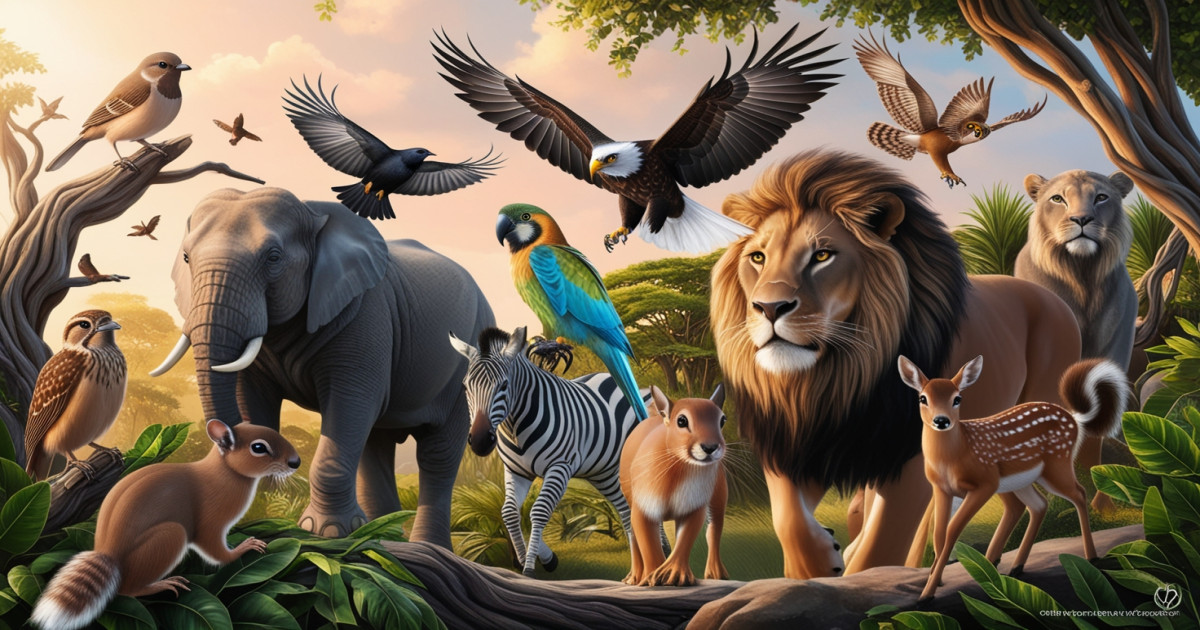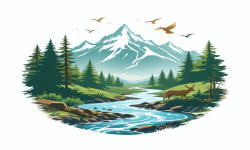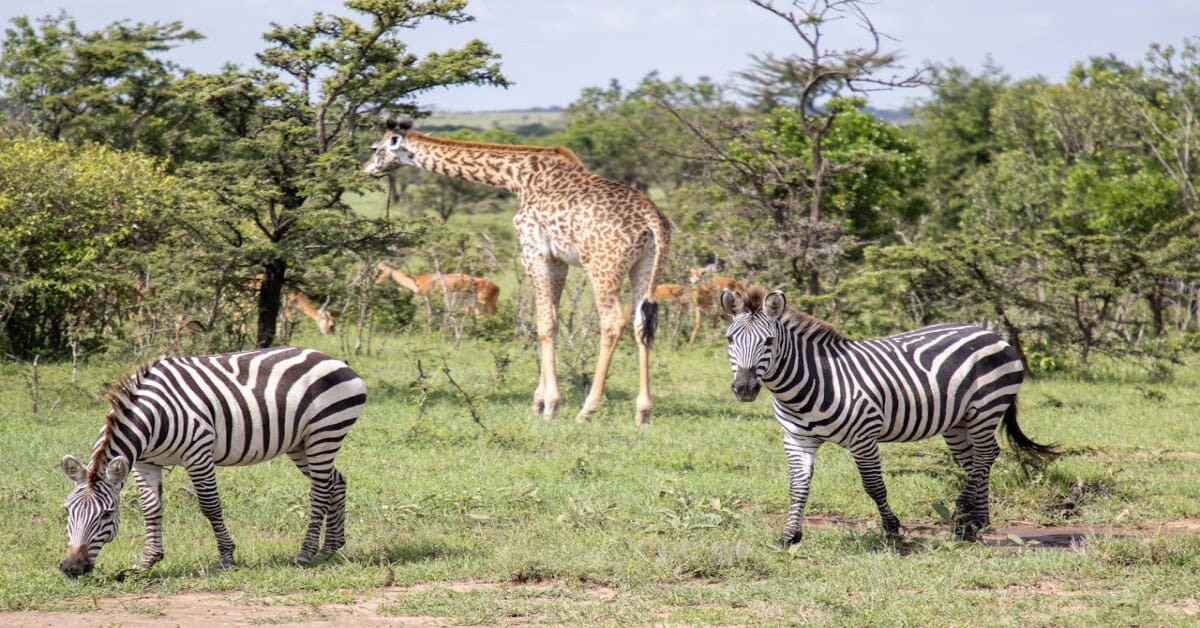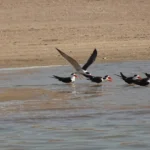Animal species are the foundation of life on Earth, showcasing incredible diversity across land, water, and air. From the tiniest insects to majestic mammals, each species contributes uniquely to the web of life. This variety ensures that ecosystems function smoothly, providing food, shelter, and balance. Understanding animal species and their ecological importance helps us appreciate their critical role in sustaining nature.
These species are not just fascinating but vital for maintaining ecological balance. Pollinators like bees help plants reproduce, while predators like tigers regulate prey populations. Every creature, no matter how small, plays a role in the grand cycle of life. Losing even one species can disrupt this delicate harmony.
Protecting animal species means protecting ourselves. Their survival ensures healthy ecosystems, which provide clean air, fertile soil, and fresh water for all living beings.

Total Animal Species in the World
The Earth is home to an astonishing variety of life forms, with estimates suggesting over 8.7 million animal species. These include terrestrial, aquatic, and microscopic organisms, each playing a role in the planet’s ecosystems.
While scientists have identified around 2 million species, many remain undiscovered, particularly in remote forests and deep oceans. This unseen diversity holds the key to understanding Earth’s evolutionary history and ecological systems.
Within the animal kingdom, the diversity is remarkable. Mammals like elephants, aquatic species like dolphins, and tiny insects such as ants all contribute uniquely to their habitats. Birds color the skies, amphibians bridge land and water ecosystems, and reptiles thrive in varied climates.
Insects, which account for a majority of species, pollinate plants, enrich soil, and provide food for other animals, highlighting their essential role.
Cataloging species is a daunting task due to unexplored regions and the microscopic size of some organisms. Remote rainforests, ocean depths, and underground caves are rich with species yet to be discovered. Additionally, rapid habitat loss and climate change threaten many species before they can even be studied.
Despite these challenges, ongoing research helps us uncover the mysteries of biodiversity and underscores the need to protect every form of life.
Animal Types
Animals are a diverse group of organisms classified based on their physical traits, habitats, and behaviors. They are vital for ecosystems, fulfilling unique roles that maintain ecological balance.
From mammals roaming forests to insects pollinating plants, each type contributes in remarkable ways. Understanding the different animal groups highlights the diversity of life on Earth and their interconnected roles.
Mammals
Mammals are warm-blooded animals with hair or fur, and most give birth to live young. They are found in various habitats, from oceans to deserts. Examples include lions, which are apex predators; dolphins, known for their intelligence; and elephants, essential for seed dispersal. Domesticated mammals like cows and dogs also play significant roles in human life.
Reptiles
Reptiles are cold-blooded creatures that thrive in diverse environments, from arid deserts to tropical wetlands. Most lay eggs, and their skin is covered in scales. Examples include crocodiles, key to maintaining wetland ecosystems, and snakes, which control rodent populations. Lizards, turtles, and iguanas are other examples of reptiles with ecological significance.
Birds
Birds are warm-blooded, feathered animals that lay eggs and are known for their ability to fly. They play vital roles in pollination, seed dispersal, and controlling insect populations. Examples include sparrows, which are urban insect controllers, and eagles, which are apex predators. Other examples are penguins, ostriches, and parrots, each contributing uniquely to their ecosystems.
Amphibians
Amphibians are cold-blooded animals that live both on land and in water during different life stages. They help control insect populations and indicate environmental health. Examples include frogs, salamanders, and toads, which act as pest controllers, and caecilians, a lesser-known group. Their moist skin also plays a role in nutrient cycling in ecosystems.
Insects
Insects are the most diverse group of animals, performing essential roles like pollination, decomposition, and pest control. Bees and butterflies are crucial pollinators, while ants aid in soil aeration. Beetles help decompose organic matter, and dragonflies control mosquito populations. Termites contribute to breaking down dead wood, maintaining forest health.
Each animal type, from mammals to insects, holds a vital place in sustaining ecosystems and supporting life.
Also Read: Biotic Environment Characteristics and Features
Ecological Importance of Animal Species
Animal species play an irreplaceable role in sustaining ecosystems by ensuring balance and supporting natural processes. Their interactions shape the health of our planet, influencing food chains, habitats, and nutrient flows. Losing any species, no matter how small, can lead to significant ecological disruptions, proving their importance.
Animals’ Role in Ecosystems
Animals maintain ecosystems through pollination, seed dispersal, and population control. Bees and butterflies, for example, pollinate plants, enabling food production. Birds and mammals scatter seeds, ensuring plants grow in new areas. Predators like lions and wolves regulate herbivore populations, preventing overgrazing.
Without these roles, ecosystems would lose their balance. For instance, the decline of pollinators threatens global food security, while unchecked herbivores can degrade vegetation.
Nutrient Cycling
Animals contribute to nutrient cycling by breaking down organic matter and redistributing nutrients. Scavengers like vultures clean up carcasses, speeding decomposition and returning nutrients to the soil. Worms and insects like beetles aerate soil while processing organic waste.
Aquatic animals like fish help recycle nutrients in water ecosystems. These actions enrich soil fertility and promote plant growth. The absence of decomposers would disrupt this cycle, causing waste accumulation and nutrient deficiencies.
Habitat Creation and Maintenance
Some species shape habitats for others. Coral reefs, built by coral polyps, shelter countless marine species. Beavers create wetlands by building dams, supporting biodiversity and regulating water flow. Elephants clear paths in forests, creating spaces for smaller animals to thrive.
When these species disappear, their ecosystems often collapse. For example, coral bleaching harms marine life dependent on reefs, while the loss of beavers reduces wetland habitats.
Without animal species, ecosystems would face instability, impacting human life through resource depletion and environmental degradation. Protecting them is crucial for sustaining a healthy planet.
Endangered Animals and Their Importance
The list of endangered animal species is growing alarmingly, with habitat loss, climate change, and poaching as major causes. Deforestation and urban expansion destroy natural habitats, leaving animals without food or shelter. Climate change disrupts migration patterns, breeding seasons, and food availability, pushing many species to the brink of extinction.
Additionally, poaching for fur, ivory, and exotic pet trades continues to threaten vulnerable populations.
Critically endangered species such as the Amur leopard, snow leopard, Great Indian Bustard, and Forest Owlet face imminent risks. The Amur leopard is among the rarest big cats, with fewer than 100 individuals left. Similarly, the Great Indian Bustard, native to India, suffers due to habitat degradation and hunting.
Each of these species holds ecological significance, contributing to their ecosystem’s health.
The loss of endangered animals impacts ecosystems profoundly. Predators like leopards regulate prey populations, maintaining a balance essential for vegetation growth. Without them, overgrazing leads to soil erosion and habitat collapse.
Similarly, birds like the Great Indian Bustard help control insect populations. Losing such species disrupts food chains and diminishes biodiversity, weakening the resilience of ecosystems to environmental changes.
Protecting endangered species is not just about saving animals; it’s about safeguarding our planet’s future. Conservation efforts such as habitat restoration, stricter anti-poaching laws, and community involvement are vital. By acting now, we can ensure ecological balance and preserve nature for generations to come.
Threats to Animal Species
Animal species face numerous threats that jeopardize their survival. Rapid industrialization, deforestation, and climate change have drastically altered habitats, leaving many species struggling to adapt. Human activities like overhunting, pollution, and introducing invasive species further accelerate their decline.
Major Threats
Habitat destruction is one of the most significant threats to wildlife. Forests are cleared for agriculture, urbanization, and mining, displacing countless species. Pollution also plays a major role; plastics choke marine life, while chemical runoff contaminates water sources.
Climate change adds to these challenges, altering animal migration, breeding, and feeding patterns. Rising temperatures and shrinking ice caps threaten polar bears and other cold-climate species.
Human Activities
Overhunting and poaching for fur, ivory, and meat continue to endanger species worldwide. For instance, elephants are hunted for their tusks, and tigers for their pelts. The introduction of invasive species, whether accidental or intentional, disrupts ecosystems by outcompeting native species. These invaders often cause native animals to lose access to food and breeding grounds.
Efforts to mitigate these threats include global conservation programs, reforestation initiatives, and stronger anti-poaching measures. Governments, organizations, and individuals must work together to protect animal species and their habitats to ensure a balanced ecosystem.
Conservation Efforts for Animal Species
Conserving animal species is essential to maintaining biodiversity and ecological balance. Various efforts, both global and local, aim to protect endangered species and their habitats. Collaborative actions, from international treaties to grassroots initiatives, are making significant strides in safeguarding wildlife.
Global Efforts
Organizations like CITES (Convention on International Trade in Endangered Species) and the IUCN Red List play a crucial role in protecting species worldwide. CITES regulates trade in endangered animals, while the IUCN identifies at-risk species and prioritizes conservation actions.
Specific programs, such as Project Tiger in India, focus on protecting tigers and restoring their habitats. Similarly, efforts to save pandas in China have resulted in population growth through habitat conservation and breeding programs.
Local Initiatives
Local conservation initiatives are equally vital. Community-based projects empower people to protect nearby wildlife. For example, in Africa, local groups work to safeguard elephants from poachers.
Protected areas, such as wildlife sanctuaries and national parks, provide safe havens for animals. India’s Jim Corbett National Park is a prime example of successful tiger conservation at a local level.
Encouraging Individual Actions
Individuals can also contribute by reducing their carbon footprint, avoiding products linked to deforestation, and supporting wildlife organizations. Small steps, like planting native trees or raising awareness, help create a more sustainable future for all species.
Conclusion
The diversity of animal species on Earth is a testament to the intricate web of life. From the smallest insects to the largest mammals, every species plays a vital role in maintaining ecosystems. Understanding animal species and their ecological importance helps highlight the need for conservation.
Addressing threats like habitat destruction and poaching ensures a balanced environment for future generations. Recognizing animal species and their importance is essential for sustaining life on Earth.
Conservation efforts, both global and local, combined with individual actions, can help restore balance and protect biodiversity. By valuing the interconnectedness of all life forms, we contribute to preserving the delicate harmony of nature. Supporting conservation efforts is not just about saving animals—it’s about ensuring a thriving planet for all.








